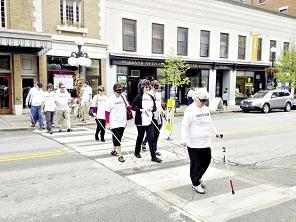
As scientists discover ways to transfer sensory elements such as sight and sound across bone, converting one to the other in the central nervous system, a new study says this could occur naturally in certain blind individuals in a process called echolocation.
The process can be learned, and it involves using echoes that take place on the tongue or the fingertip.
"Our experiments show that echolocation is not just a tool to help visually-impaired individuals navigate their environment, but can act as an effective sensory replacement for vision, allowing them to recognize the shape, size, and material properties of objects" says Mel Goodale from the University of Western Ontario in Canada.
Top-tier echo locators channel the portions of the brain commonly used for visual perception into this art.
The study was presented at the 9th Annual Canadian Neuroscience Meeting, on May 24 2015 in Vancouver British Columbia.


